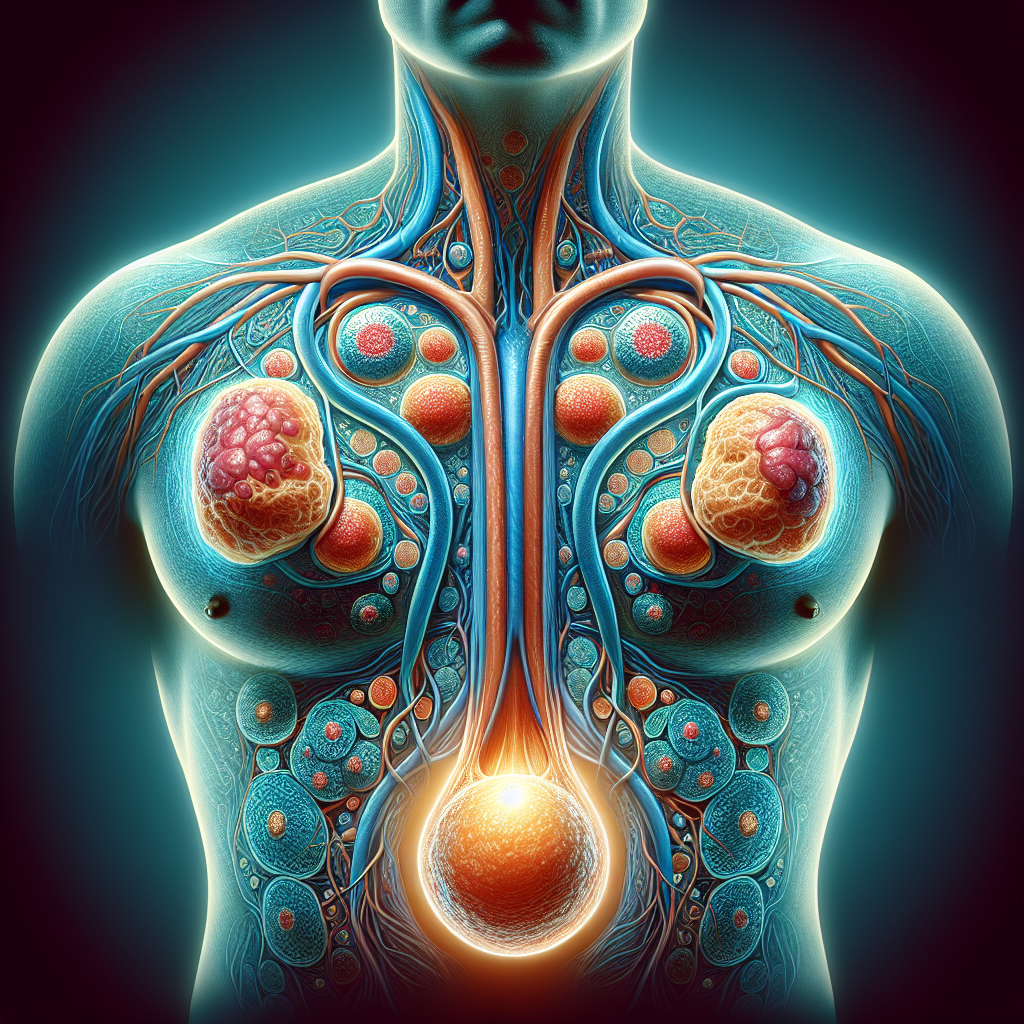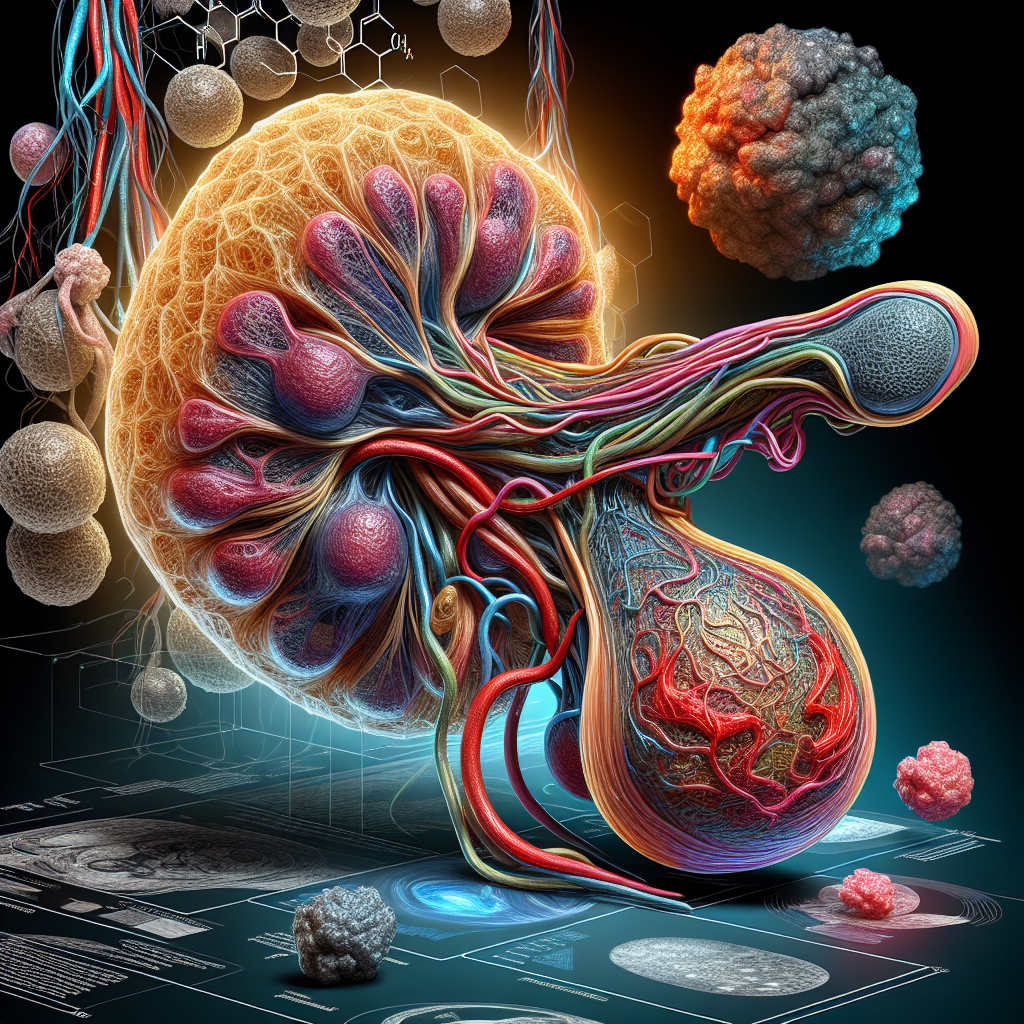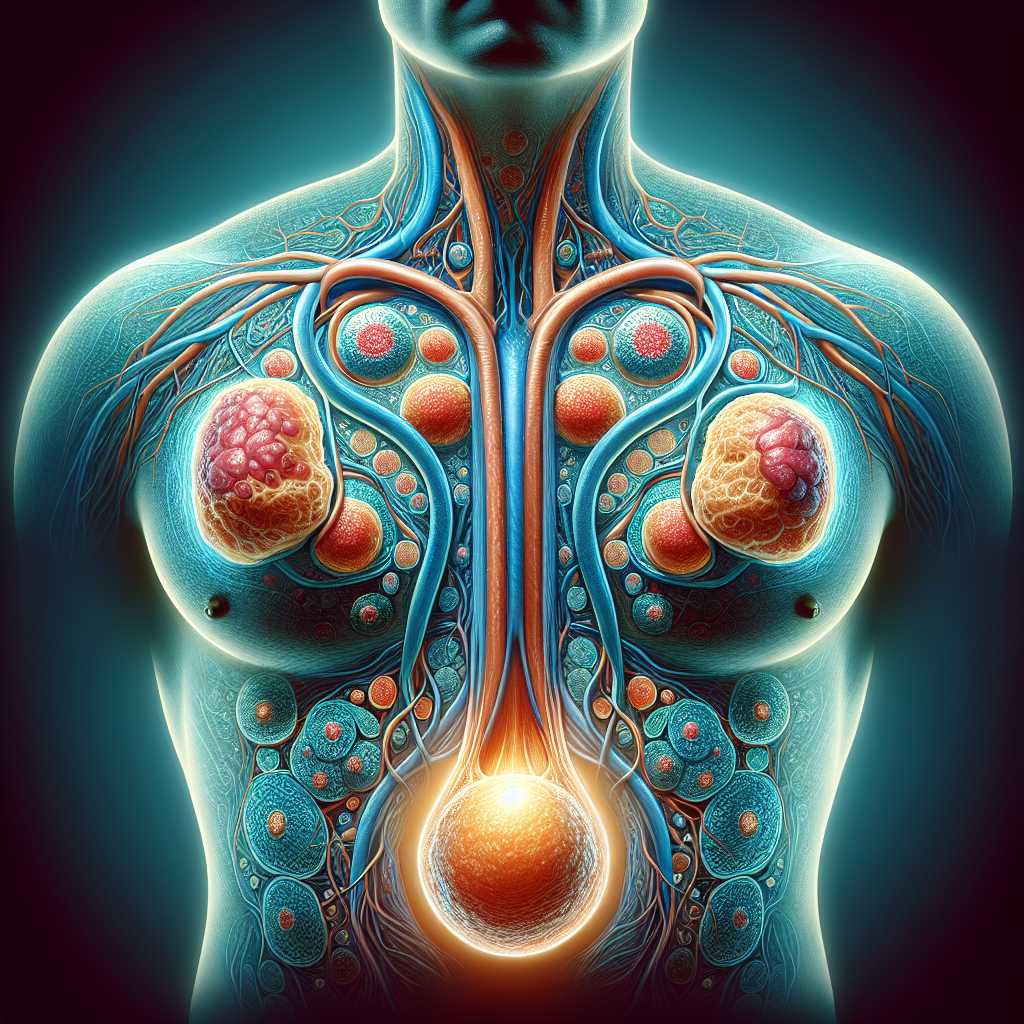If you or a loved one has been diagnosed with prostate cancer, you may have heard about an important topic called prostate cancer in lymph nodes. This occurs when the cancer spreads from the prostate to the surrounding lymph nodes, potentially increasing the risk and complexity of treatment. In this article, we will explore the significance of prostate cancer in lymph nodes, its impact on treatment options, and highlight some key factors to consider for those facing this stage of the disease.
Overview
What is prostate cancer?
Prostate cancer is a type of cancer that develops in the prostate, a small gland in the male reproductive system. It occurs when the cells in the prostate gland start to grow uncontrollably, forming a tumor. While prostate cancer is one of the most common types of cancer in men, it is highly treatable if detected early.
What are lymph nodes?
Lymph nodes are small, bean-shaped structures that are part of the body’s immune system. They are responsible for filtering lymph, a fluid that contains waste products, bacteria, and abnormal cells. Lymph nodes are found throughout the body, including in the area around the prostate gland.
The connection between prostate cancer and lymph nodes
When prostate cancer spreads beyond the prostate gland, it can metastasize to nearby lymph nodes. Lymph nodes serve as a pathway for cancer cells to travel and establish new tumors in different parts of the body. The presence of prostate cancer in the lymph nodes indicates an advanced stage of the disease and may require more aggressive treatment approaches.
Diagnosis and Staging
Symptoms and signs of prostate cancer in lymph nodes
Prostate cancer that has spread to the lymph nodes may not cause specific symptoms in its early stages. However, as the disease progresses, some signs and symptoms may be noticeable. These can include swelling or enlargement of lymph nodes, pelvic pain or discomfort, urinary problems, fatigue, and unexplained weight loss. It is important to consult a healthcare professional if any of these symptoms are experienced.
Diagnostic tests for prostate cancer
To diagnose prostate cancer in the lymph nodes, several tests may be conducted. These can include a physical examination to check for enlarged lymph nodes, blood tests to measure prostate-specific antigen (PSA) levels, imaging tests such as CT scans or MRI scans to identify the presence and extent of lymph node involvement, and biopsies to confirm the presence of cancer cells in the lymph nodes.
Staging prostate cancer in lymph nodes
Staging is the process of determining the extent and spread of cancer in the body. Prostate cancer staging helps in developing an appropriate treatment plan. When prostate cancer has spread to the lymph nodes, it is considered an advanced stage of the disease. Staging is typically done using the TNM system, which takes into account factors such as tumor size, lymph node involvement, and the presence of distant metastases.

Treatment Options
Localized prostate cancer in lymph nodes
For localized prostate cancer that has spread to nearby lymph nodes, treatment options may include surgery, radiation therapy, hormone therapy, or a combination of these approaches. The choice of treatment depends on various factors such as the extent of lymph node involvement, the patient’s overall health, and the preferences of the individual and their healthcare team.
Advanced prostate cancer in lymph nodes
When prostate cancer has spread extensively to the lymph nodes, systemic therapies such as hormone therapy, chemotherapy, immunotherapy, or targeted therapy may be considered. These treatments aim to control or slow down the growth of cancer cells throughout the body.
Standard treatment options
Standard treatment options for prostate cancer in lymph nodes often involve a multidisciplinary approach. This may include a combination of surgery, radiation therapy, hormone therapy, and chemotherapy based on the individual’s specific condition and overall health. The goal of treatment is to manage symptoms, control the spread of cancer, and improve the patient’s quality of life.
Emerging treatment approaches
Research and clinical trials are continually exploring new treatment approaches for prostate cancer in lymph nodes. Emerging therapies, such as targeted therapies and immunotherapies, show promise in improving treatment outcomes and prolonging survival for patients with advanced prostate cancer. These approaches aim to target specific molecules or boost the body’s immune system to fight against cancer cells.
Surgical Treatment
Lymph node biopsy
A lymph node biopsy is a surgical procedure that involves the removal of a small sample of lymph node tissue for examination under a microscope. It helps determine whether cancer cells have spread to the lymph nodes. A biopsy can be performed using various techniques, including a fine needle aspiration biopsy, core needle biopsy, or surgical excision. The choice of biopsy method depends on the location and size of the affected lymph node.
Lymphadenectomy
Lymphadenectomy, also known as lymph node dissection, involves the surgical removal of lymph nodes in the affected area. In the context of prostate cancer, it may be performed to remove cancerous lymph nodes near the prostate gland. Lymphadenectomy can help in determining the extent of lymph node involvement and guide further treatment decisions.
Robotic-assisted lymph node dissection
Robotic-assisted lymph node dissection is a minimally invasive surgical technique that uses robotic arms controlled by a surgeon to remove lymph nodes. This approach offers several advantages over traditional open surgery, including smaller incisions, reduced blood loss, shorter recovery time, and potentially fewer complications. It may be an option for some patients with prostate cancer involving lymph nodes.

Radiation Therapy
External beam radiation therapy (EBRT)
External beam radiation therapy (EBRT) uses high-energy X-rays to kill cancer cells. It is a common treatment approach for prostate cancer in lymph nodes. During EBRT, a machine delivers radiation from outside the body to the affected area. The goal is to destroy cancer cells while minimizing damage to surrounding healthy tissues.
Brachytherapy
Brachytherapy, also known as internal radiation therapy, involves the placement of radioactive seeds or pellets directly into the prostate gland or affected lymph nodes. These sources of radiation emit a continuous dose of radiation, targeting the cancer cells while sparing nearby healthy tissues. Brachytherapy may be used as a primary treatment for prostate cancer involving lymph nodes or in combination with other treatment modalities.
Radiation therapy as a primary treatment for lymph node involvement
In some cases, radiation therapy may be used as a primary treatment for prostate cancer in lymph nodes, particularly when surgery is not feasible or the cancer is localized within the lymph nodes. This approach aims to eradicate or control cancer cells in the lymph nodes and may be combined with hormone therapy for enhanced effectiveness.
Hormone Therapy
Androgen deprivation therapy (ADT)
Androgen deprivation therapy (ADT) is a common hormone therapy used in the treatment of prostate cancer, including cases involving lymph node metastasis. ADT works by reducing the levels of androgens, such as testosterone, which stimulate the growth of prostate cancer cells. This therapy can be administered through injections, oral medications, or surgical removal of the testicles.
Anti-androgens
Anti-androgens are medications that block the effects of androgens on prostate cancer cells. They are often used in combination with ADT to further suppress the activity of hormones that promote cancer growth. Anti-androgens can be taken orally and may have different mechanisms of action compared to ADT.
Luteinizing hormone-releasing hormone (LHRH) agonists
Luteinizing hormone-releasing hormone (LHRH) agonists are drugs that mimic the action of LHRH, a hormone that regulates the production of testosterone. By continuously stimulating the release of LHRH, these drugs eventually suppress the production of testosterone. LHRH agonists are commonly used in hormone therapy for prostate cancer with lymph node involvement.
Luteinizing hormone-releasing hormone (LHRH) antagonists
Luteinizing hormone-releasing hormone (LHRH) antagonists work similarly to LHRH agonists, but they rapidly suppress testosterone production without an initial flare of hormone levels. This can provide quicker hormone suppression and symptom relief compared to LHRH agonists. LHRH antagonists are an alternative treatment option for prostate cancer in lymph nodes.
Chemotherapy
Role of chemotherapy in lymph node metastasis
Chemotherapy plays a crucial role in the treatment of prostate cancer that has spread to lymph nodes. It uses drugs to kill cancer cells throughout the body, including those in the lymph nodes. Chemotherapy may be recommended in cases where the cancer has become resistant to hormone therapy or when there is extensive lymph node involvement.
Chemotherapy drugs used for prostate cancer in lymph nodes
Several chemotherapy drugs are used for the treatment of prostate cancer in lymph nodes. These can include docetaxel, cabazitaxel, and mitoxantrone. These drugs work by disrupting the growth and division of cancer cells, helping to control the progression of the disease and improve overall survival.
Combination therapy
Combination therapy refers to the use of multiple chemotherapy drugs in a treatment regimen. This approach aims to enhance the effectiveness of chemotherapy and reduce the likelihood of developing drug resistance. The specific combination of chemotherapy drugs used for prostate cancer in lymph nodes may vary based on individual factors, tumor characteristics, and treatment goals.
Immunotherapy
Checkpoint inhibitors
Checkpoint inhibitors are a form of immunotherapy that helps the immune system recognize and attack cancer cells. They work by blocking proteins called checkpoint inhibitors, which can inhibit the immune system’s response to cancer. By using checkpoint inhibitors, the immune system can effectively target and destroy cancer cells, including those found in lymph nodes.
Cancer vaccines
Cancer vaccines are another form of immunotherapy that stimulates the immune system to recognize and target cancer cells. These vaccines can be designed to target specific antigens found on cancer cells, including those present in lymph nodes affected by prostate cancer. Cancer vaccines show promise in enhancing the body’s natural defenses against cancer.
Adoptive cell therapy
Adoptive cell therapy is a personalized form of immunotherapy that involves modifying a patient’s own immune cells to better identify and attack cancer cells. In the context of prostate cancer in lymph nodes, adoptive cell therapy aims to enhance immune cell responses against cancer cells in the lymph nodes. This approach is still being researched in clinical trials but shows potential as an effective treatment option.
Clinical Trials
Current research and ongoing clinical trials
Numerous clinical trials are currently underway to explore new treatments and advancements in the management of prostate cancer in lymph nodes. These trials aim to evaluate the safety and efficacy of new therapies, refine existing treatment approaches, and identify potential breakthroughs in the field of prostate cancer research. Participating in clinical trials can offer eligible patients access to novel treatments and contribute to the advancement of medical knowledge.
Potential breakthroughs in treating prostate cancer in lymph nodes
While there have been significant advancements in the treatment of prostate cancer in lymph nodes, ongoing research holds promise for future breakthroughs. New targeted therapies, immunotherapies, and combination approaches are being developed to improve treatment outcomes and reduce the burden of the disease. These advancements, if successful, may provide more effective and personalized treatment options for patients with prostate cancer involving lymph nodes.
Managing Side Effects
Common side effects of treatments
Treatment for prostate cancer in lymph nodes can cause various side effects, which can vary depending on the specific treatment approach used. Common side effects may include fatigue, urinary problems, sexual dysfunction, hot flashes, decreased bone density, and changes in mood or emotional well-being. It is essential for patients to discuss any side effects they experience with their healthcare team to receive appropriate supportive care.
Strategies for managing side effects
There are various strategies available to help manage side effects associated with treatments for prostate cancer in lymph nodes. These can include lifestyle modifications, such as maintaining a healthy diet and exercising regularly, managing stress, and seeking support from healthcare professionals, support groups, or counseling services. Additionally, medications or other interventions may be prescribed to alleviate specific side effects and improve overall well-being.
Supportive care options
Supportive care plays a vital role in managing the overall well-being of patients undergoing treatment for prostate cancer in lymph nodes. Supportive care options can include psychological support, nutrition counseling, pain management, physical therapy, and palliative care. These services aim to address the emotional, physical, and practical needs of patients and their families throughout the treatment journey, ensuring optimal quality of life.
In conclusion, prostate cancer that has spread to the lymph nodes represents an advanced stage of the disease. However, numerous treatment options are available, including surgery, radiation therapy, hormone therapy, chemotherapy, immunotherapy, and targeted therapies. Ongoing research and clinical trials offer hope for future breakthroughs in the treatment of prostate cancer involving lymph nodes. It is essential for individuals diagnosed with prostate cancer in lymph nodes to work closely with their healthcare team to develop a personalized treatment plan and actively manage any side effects that may arise. With early detection and appropriate treatment, individuals with prostate cancer in lymph nodes can experience improved outcomes and quality of life.

